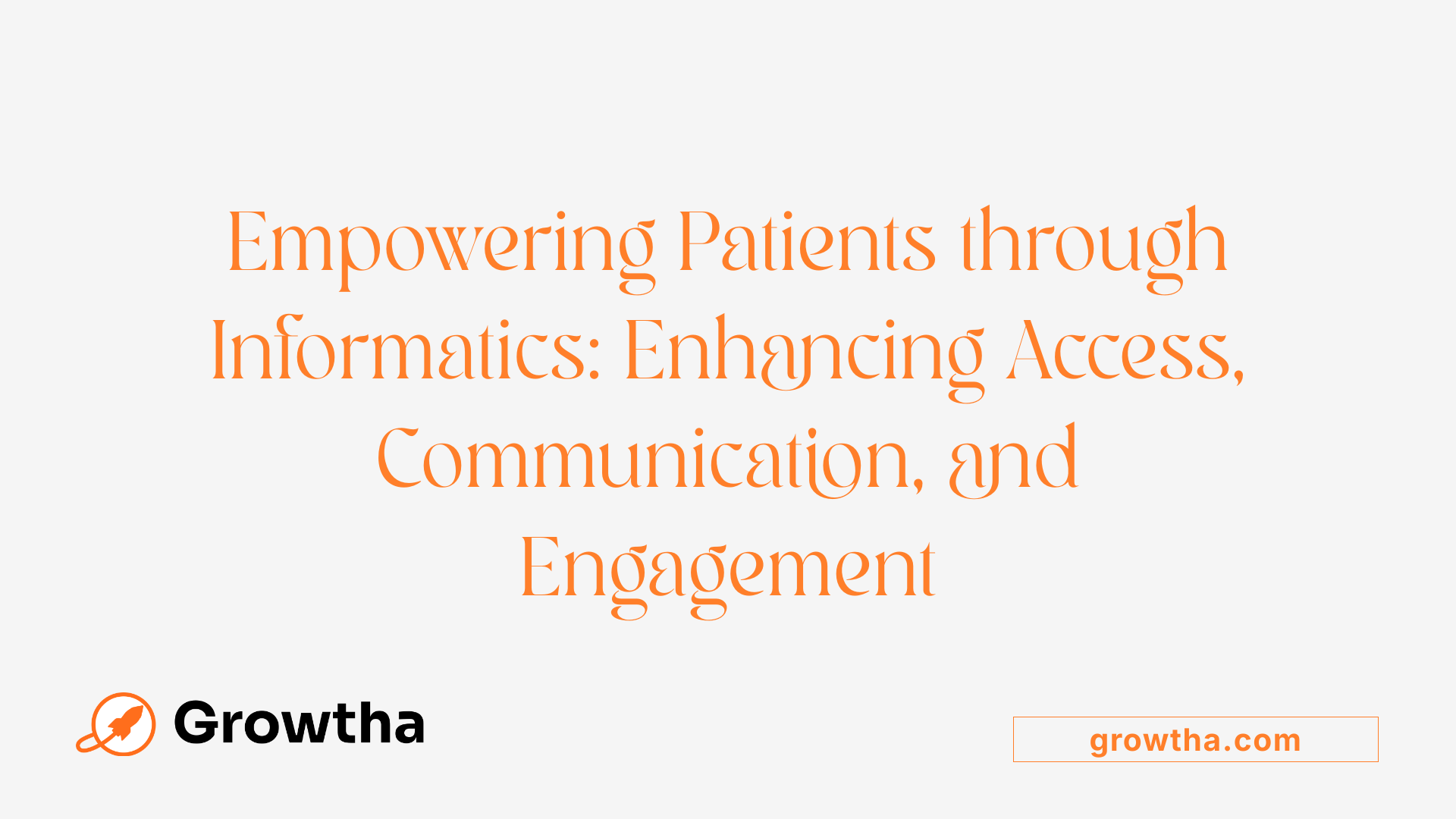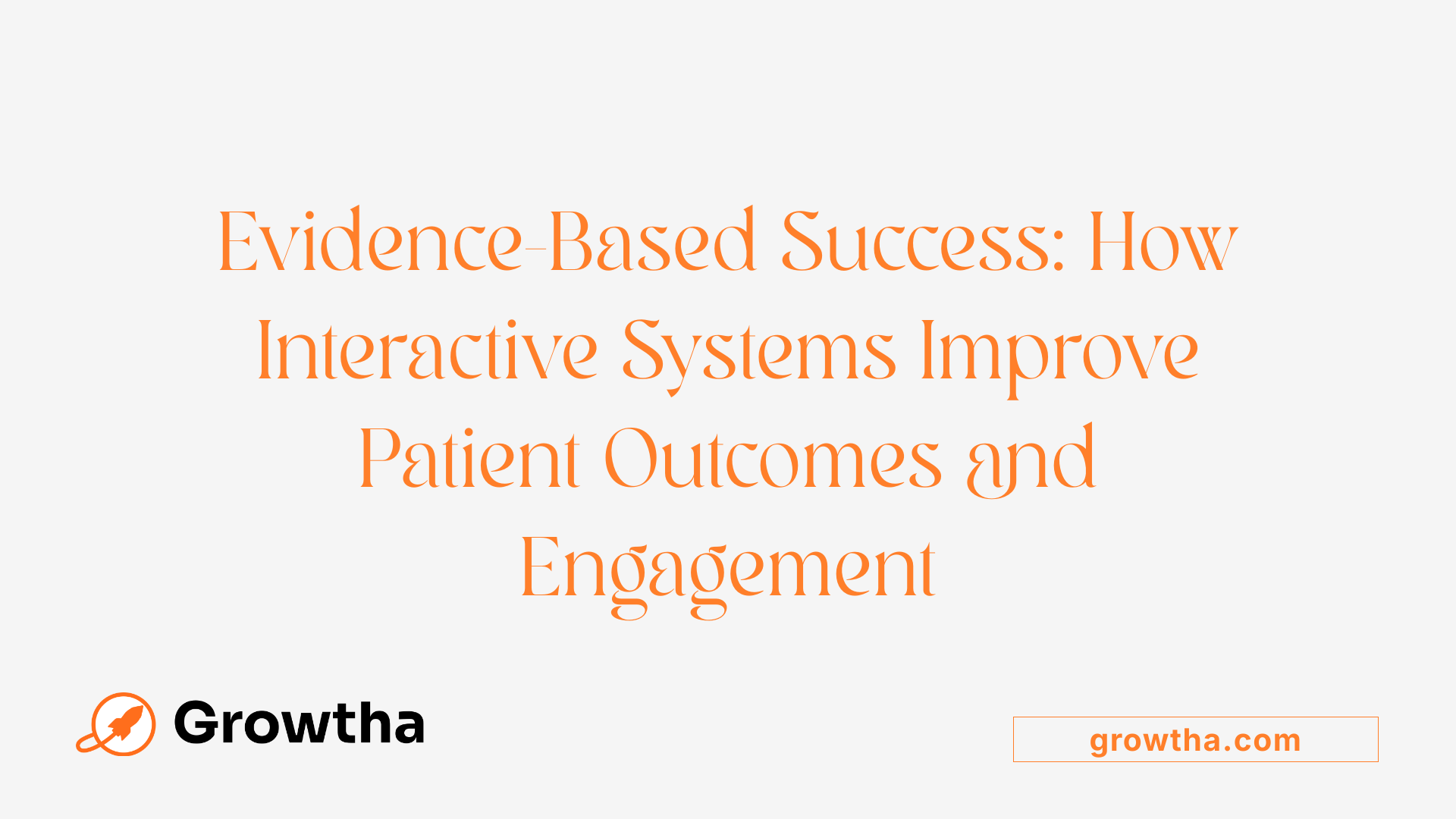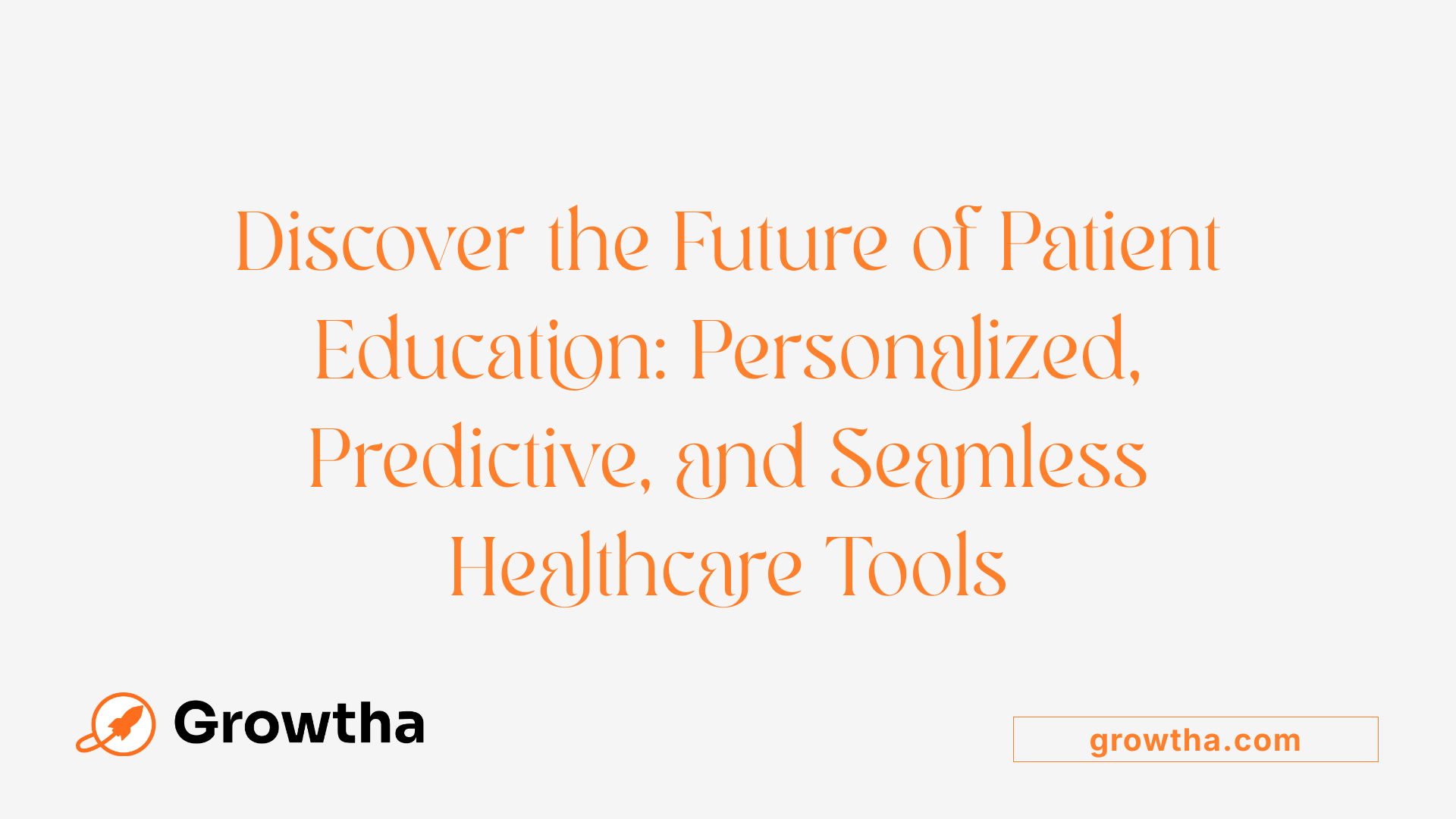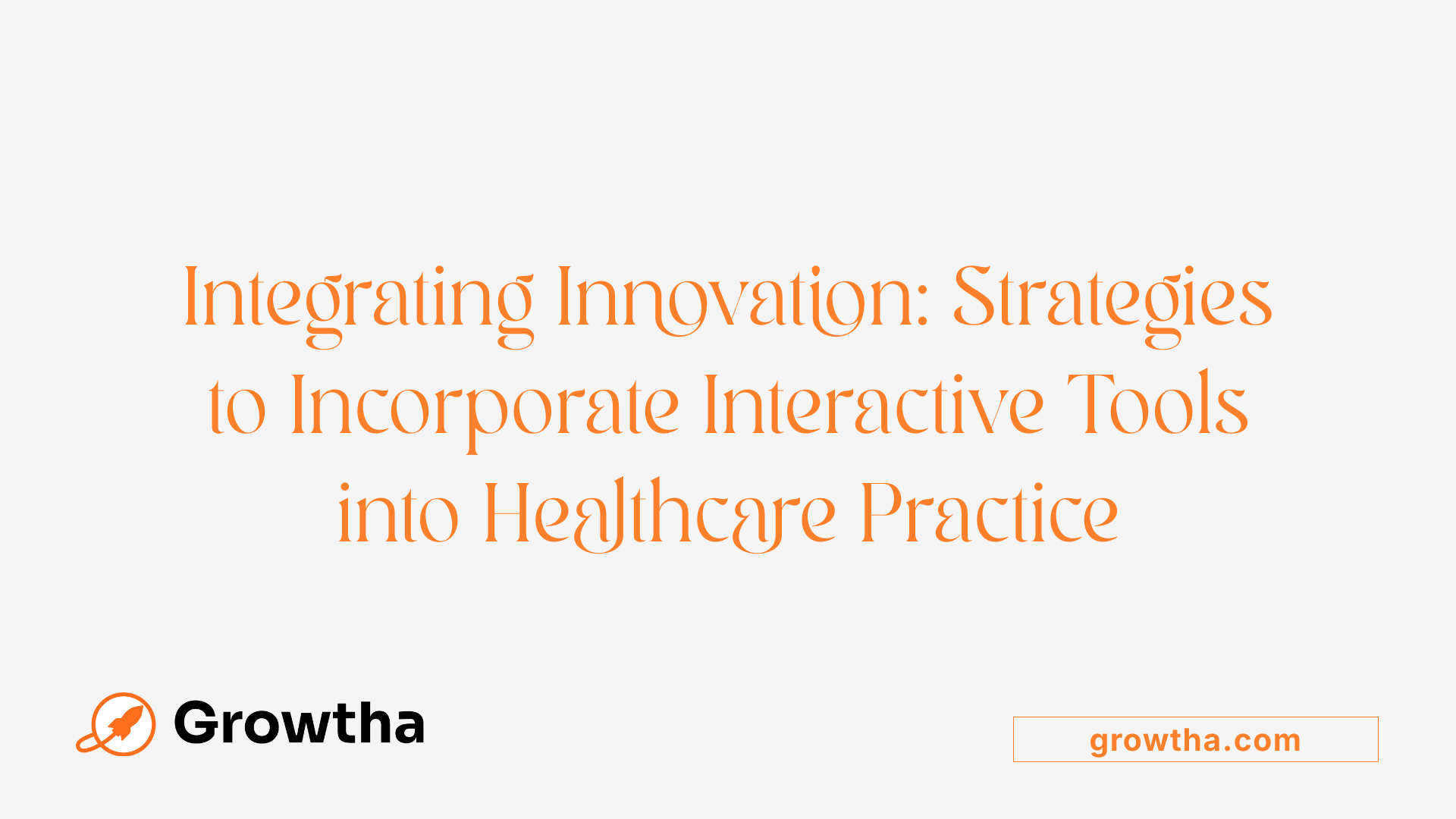The Role of Interactive Tools in Patient Engagement
Transforming Healthcare: Leveraging Interactive Technologies for Enhanced Patient Involvement


The Role of Interactive Tools in Patient Engagement
Unlocking the Power of Digital Engagement in Healthcare
In the rapidly evolving landscape of healthcare, interactive tools are revolutionizing patient engagement by fostering active participation, improving health literacy, and fostering shared decision-making. This article explores the comprehensive role and impact of these technological innovations in enhancing patient-centered care across diverse settings.
The Significance of Informatics in Promoting Patient-Centered Care

What is the role of informatics in promoting patient-centered care?
Informatics is fundamental in transforming healthcare into more patient-focused. It enables easy access to high-quality health information through electronic health records (EHRs) and patient portals.
By providing patients with direct access to their medical information, these tools empower them to participate actively in their own care. Patients can review their health data, understand treatment options, and make more informed decisions.
How does informatics facilitate communication and coordination among care teams?
Informatics tools improve communication across healthcare providers, leading to better care coordination. Secure messaging and telehealth platforms allow seamless, real-time interaction among clinicians, patients, and specialists.
This interconnectedness enhances safety, reduces errors, and ensures everyone involved stays updated about the patient's condition, especially during complex treatments like cancer therapies.
How does access to high-quality health information empower patients?
Access to clear, tailored health information increases patient confidence and helps them manage their health proactively. Interactive resources such as patient-reported outcomes and educational videos improve understanding.
Patients who are well-informed are more likely to adhere to treatments and participate in shared decision-making, ultimately leading to better health outcomes.
In what ways do social media and online communities contribute to patient engagement?
Social media platforms and online support communities expand engagement beyond clinical settings. They offer spaces for patients to share experiences, seek advice, and find peer support.
These online interactions foster a sense of community and provide emotional support, which is especially valuable for those with chronic illnesses or mental health conditions.
Challenges and considerations in implementing informatics tools
Despite its benefits, utilizing informatics effectively requires addressing issues related to data quality, privacy, and social inequities. Ensuring security and equitable access is vital for maximizing its positive impact on patient-centered care.
In summary, informatics enhances how patients access information, communicate with providers, and connect with support networks, all central to personalized, effective healthcare.
Examples of Innovative Interactive Tools in Healthcare

What are some examples of interactive tools such as AI-powered systems, virtual simulations, gamification, and patient portals?
Healthcare technology has advanced to include a variety of interactive tools designed to engage patients actively in their health management. AI-powered chatbots and predictive analytics stand out as innovative solutions that deliver personalized communication, appointment scheduling, and medication management. For example, patient portals like NHS App and Pfizer Clinical Trial Alumni Portal enable users to access their health information, communicate securely with providers, and manage healthcare tasks efficiently.
Virtual simulations and VR applications are increasingly used to educate patients about complex medical procedures, thereby reducing anxiety and improving understanding. These tools are also used in physical and cognitive rehabilitation programs, such as stroke recovery, providing immersive environments that assist patients in their healing process.
Gamification has become a popular method to motivate healthy behaviors through elements such as points, badges, challenges, and rewards. Many health apps like Fitbit and Mango Health incorporate gamified features to encourage activity, medication adherence, and lifestyle modifications, making health management more engaging.
Educational content in digital health also includes animated videos, e-learning portals, and clickable content. These tools help improve patient understanding and retention of health information, ensuring they are well-informed about their conditions and treatments.
Furthermore, digital therapeutics are employing gamified content and immersive environments to treat mental health conditions, manage chronic diseases, and develop skills. As these technologies continue to evolve, their role in enhancing patient engagement and improving health outcomes becomes increasingly significant.
| Tool Type | Examples | Purpose | Additional Details |
|---|---|---|---|
| AI-powered chatbots | Various healthcare apps | Personalized communication, symptom checking | Used for instant responses and guidance |
| Patient portals | NHS App, Pfizer Portal | Access health data, manage appointments | Facilitate secure communication |
| Virtual reality | Stroke rehab programs | Education, anxiety reduction | Immersive environments for therapy |
| Gamified apps | Fitbit, Mango Health | Motivation, adherence | Rewards, challenges for behavior change |
| Educational videos | Animated health content | Enhance understanding | Accessible via multiple devices |
| Digital therapeutics | Mental health apps, chronic disease programs | Treatment, skill building | Interactive and engaging environments |
These examples illustrate how the integration of interactive tools can significantly improve patient engagement, understanding, and health outcomes across various medical settings.
Digital Platforms and Their Influence on Patient Participation and Outcomes
How do digital and technological platforms influence patient participation, behavior change, and health outcomes?
Digital and technological platforms play a significant role in transforming patient engagement within healthcare. They improve access to essential health information and create efficient channels for communication between patients and providers through tools such as patient portals, telehealth services, and secure messaging.
These platforms support behavior change by enabling patients to actively manage their health using mobile health apps, wearables, and social media. For instance, apps that track medications or health metrics encourage adherence and give patients feedback on their progress. Wearables monitor vital signs in real-time, providing early alerts and fostering proactive health management.
Numerous studies highlight positive impacts. For example, interventions delivered through mobile apps and remote monitoring have been linked to reduced HbA1c levels in diabetic patients, lower hospital readmissions, and increased participation in preventive care like vaccinations and screenings.
Features such as AI-powered chatbots and social media engagement encourage ongoing learning and support, helping patients understand and adhere to treatment plans. These tools also empower patients to stay informed about their health conditions and treatment options.
Despite these benefits, there are challenges to address. Digital literacy disparities, privacy concerns, and unequal access to technology can impede maximum benefit. Addressing these barriers involves tailoring digital solutions to diverse populations, ensuring data security, and promoting equitable access.
Overall, digital health platforms significantly boost patient participation, support healthier behaviors, and improve health outcomes. To achieve their full potential, healthcare systems must invest in training, accessible technology, and continuous research to refine these digital tools.
Research Evidence Supporting Effectiveness of Interactive Systems

What does research say about the effectiveness of interactive health information systems?
Studies have shown that interactive health information systems (IHIS) can significantly influence health behaviors and enhance patient engagement. When these systems are designed to be highly interactive and tailored to individual needs, their impact is even greater.
Empirical research highlights their successful application in various health areas. For example, in smoking prevention, interactive tools have helped motivate behavioral changes. Similarly, support systems for cancer patients have improved emotional well-being and adherence to treatment plans.
Features like social presence, which fosters a sense of community, and interactive communication—such as chat functionalities and real-time feedback—are key to these systems' success. These elements help users feel more connected, supported, and motivated.
The widespread adoption of electronic health records (EHRs) and patient portals has further supported this trend by increasing access to health data and enabling continuous health monitoring.
Notably, during the COVID-19 pandemic, the use of internet-based platforms surged. These platforms provided vital healthcare delivery and patient support through virtual consultations, online communities, and educational resources.
Overall, the evidence supports that well-designed IHIS can improve health outcomes by promoting enthusiasm and active participation in healthcare. They make health management more accessible, personalized, and efficient, fitting seamlessly into the evolving framework of learning health systems. This demonstrates the ongoing importance of integrating interactive technology into healthcare for better patient experiences and outcomes.
Future Trends and Benefits of Interactive Patient Education Tools

Improving health literacy and empowerment
Interactive patient education tools significantly boost health literacy by providing engaging, easy-to-understand information tailored to individual needs. Features such as videos, animations, and quizzes help patients grasp complex health concepts, empowering them to take active roles in managing their health.
Personalized content and real-time communication
Modern tools leverage AI to deliver personalized health information, medication reminders, and tailored educational content. Real-time communication channels, including secure messaging and virtual consultations, enable patients to connect instantly with healthcare providers, promoting ongoing engagement and support.
Predictive analytics and AI-driven personalization
Emerging trends focus on advanced data analysis through predictive analytics. AI algorithms analyze health trends and behaviors to predict risks and recommend early interventions. Hyper-personalized experiences adapt dynamically to patient data, enhancing relevance and effectiveness of care.
Interoperability and seamless data exchange
Interoperability ensures that various health IT systems, such as EHRs and monitoring devices, communicate efficiently. Seamless data exchange enables a comprehensive view of patient health, facilitating more coordinated and timely interventions.
Enhancing patient satisfaction and reducing costs
By providing accessible, personalized, and engaging educational experiences, these tools improve patient satisfaction. They also support better adherence to treatments and early problem detection, which can lower healthcare costs by reducing hospital readmissions and unnecessary procedures.
| Benefit Area | Features Involved | Impact | Future Directions |
|---|---|---|---|
| Health Literacy | Educational videos, quizzes | Better understanding, empowerment | Use of virtual reality for immersive learning |
| Personalization | AI algorithms, tailored content | Increased engagement | Hyper-personalization based on real-time data |
| Communication | Secure messaging, telehealth | Continuous support and feedback | Integration with wearable devices |
| Data Exchange | EHR interoperability, health apps | Coordinated care | Advanced predictive analytics |
| Satisfaction & Cost | User-friendly interfaces, real-time alerts | Improved experience and savings | AI-driven proactive care models |
Addressing challenges
While the benefits are clear, barriers like digital literacy, privacy concerns, and access disparities must be addressed. Ensuring data security and providing education on technology use are essential steps in maximizing these tools’ potential.
Overall, the future of interactive health education tools lies in intelligent, seamless, and patient-centered technologies that promote proactive health management, improve outcomes, and deliver greater satisfaction.
Strategies for Integrating Interactive Tools into Healthcare Practice

What strategies and mechanisms are used to integrate interactive tools into healthcare practices to enhance patient involvement and health literacy?
Integrating interactive tools into healthcare settings requires a multifaceted approach. A primary strategy involves adopting digital technologies such as mobile health apps, virtual reality (VR), social media platforms, and telehealth solutions. These tools are particularly effective in improving health literacy among adolescents and other patient groups, making health information more accessible and engaging.
Active patient involvement is fostered through educational practices like problem-based learning, role-playing, and simulations. These methods encourage critical thinking, decision-making, and personal engagement with health information, leading to better understanding and adherence.
Incorporating theoretical frameworks such as Nutbeam’s health literacy model helps tailor interventions to target functional, interactive, and critical health literacy levels. This holistic approach ensures that educational content meets patients’ diverse needs while leveraging peer education and social networks for wider dissemination.
Successful implementation depends greatly on stakeholder engagement. Internal champions within healthcare institutions can promote the use of digital tools and foster organizational support. Aligning these initiatives with institutional priorities and strategic plans increases the likelihood of sustainable integration.
Evaluation and feedback mechanisms are essential to monitor effectiveness and facilitate continuous improvement. Establishing clear metrics and outcome criteria guides the selection of suitable digital tools and fosters accountability.
Despite these strategies, challenges such as technological infrastructure limitations, resistance to change, and policy barriers can impede adoption. Ongoing efforts to develop assessment methods, enhance healthcareIT infrastructure, and update policies are necessary to embed interactive tools effectively into daily clinical workflows.
Charting the Future of Patient Engagement Through Technology
As healthcare continues to evolve, the integration of innovative interactive tools stands at the forefront of patient-centered practice. By empowering patients with personalized, accessible, and engaging resources—supported by continuous research, strategic implementation, and technological advancements—healthcare providers can foster more active, informed, and satisfied patient communities. This trajectory promises not only improved health outcomes but also a more equitable and responsive healthcare system that genuinely centers around the needs and preferences of patients.
References
- Interactive systems for patient-centered care to enhance patient ...
- Healthcare Videos and Interactive Tools for Patient Engagement
- Patient Engagement Technology: What It Is and Why You Need It
- The Impact of Information Technology on Patient Engagement and ...
- Interactive Patient Education: 5 Methods That Work - F.Learning Studio
- Improving Patient Engagement: Leveraging Technology To Create ...
- Leveraging Technology to Boost Patient Engagement - AbbaDox
- Exploring potential drivers of patient engagement with their health ...
- Using Interactive Patient Engagement Technology in Clinical Practice







